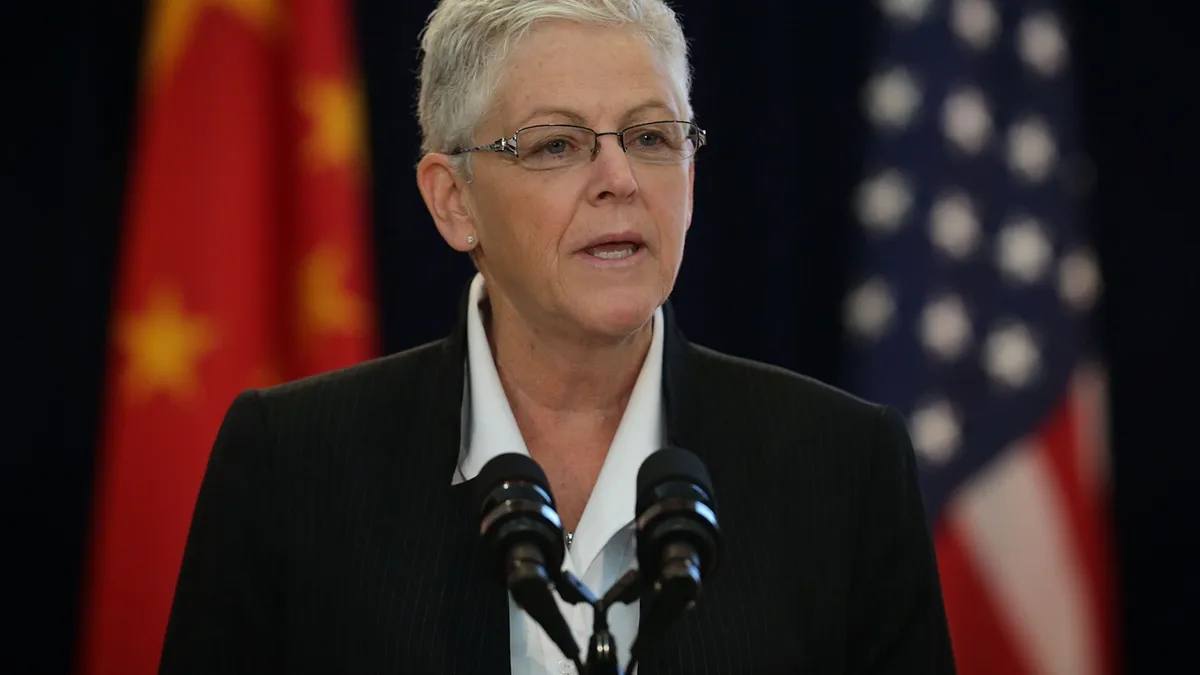Dive Brief:
- The Environmental Protection Agency last week finalized a voluntary carbon trading model for Clean Power Plan compliance and sent it to the Office of Management and Budget (OMB) for review, according to multiple news reports.
- Under the program, states could comply with the federal carbon regulations by entering an optional cap-and-trade program for emissions and earn additional credit for early investments in alternative energy through a finalized Clean Energy Incentive Program.
- Opponents of the plan said the move defied an order from the Supreme Court to halt Clean Power Plan implementation until legal challenges conclude, but the EPA said a number of states had asked for guidance on crafting compliance plans if the regulations are held up in court.
Dive Insight:
Under the Supreme Court's surprise February order, the EPA cannot compel states to plan for the nation's first set of power sector carbon regulations until all court challenges conclude.
That's not expected to happen until late next year at the earliest, but the judicial hold hasn't stopped the agency from doing its own compliance planning, laying out guidelines for utilities and supportive states to plan for if the Clean Power Plan is upheld.
Last week, the EPA took a big step in that campaign, finalizing a voluntary carbon trading model for states and sending it to OMB for review. The model, ClimateWire notes, could form the foundation of federal compliance plans issued to states that do not write their own.
The EPA also finalized plans for the Clean Energy Incentive Program (CEIP), which would reward states that take early action to invest in renewable resources before the official compliance period for the CPP begins in 2022.
Though both new programs would be voluntary, opponents said the agency's continued planning defied the Supreme Court stay.
Twenty-six GOP governors sent a letter to the agency, saying it "ignored explicit instruction from the court, throwing years of well-established case law out the window," the AP reports. And coal company Murray Energy called the continued planning "deeply offensive" in comments on the CEIP, ClimateWire notes.
Some clean energy advocates called for the EPA to go further to reward early renewable energy investments. Comments from Advanced Energy Economy, a trade group, called on the agency to expand eligibility for clean energy programs and push the start date for incentives forward a year, to 2019. All CEIP comments are available on the Federal Register website.
The fate of the carbon trading model and CEIP are likely to be decided at the Supreme Court next year. The D.C. Circuit heard arguments on the Clean Power Plan in September, and insiders say the composition of both courts generally favors the EPA.














